
Pyloric Gland
Section showing the pyloric glands. Labels: s, free surface; d, ducts of pyloric glands; n, neck of…

Types of Microorganisms
Types of microorganisms. Labels: a, micrococci arranged singly; in twos, diplococci- if all the micrococci…

Magnified Surface of a Hair
The hair is produced by a peculiar growth and modification of the epidermis. Externally it is covered…

Movement of the Vocal Cords
Three laryngoscopic view of the superior aperture of the larynx and surrounding parts. Labels: A, the…
Cortical Gray Matter of the Cerebrum
The five layers of the cortical gray matter of the cerebrum. 1, Superficial layer with abundance of…

Tablet Frame
This modern Tablet Architectural frame was in the style of the Italian Renaissance. It had the general…

Pulpit Frame
The pulpit Architectural frame was a German frame that was dated between 1595 to 1597. It had the general…

Cerebellum of Dog's Brain
Vertical section of dog's cerebellum. Labels: p m, pia mater; p, corpuscles of Purkinje, which are branched…

Magnified Rabbit's Cornea
Vertical section of rabbit's cornea. Labels: anterior epithelium, showing the different shapes of the…

Section of Rabbit's Cornea
Vertical section of rabbit's cornea, stained with gold chloride. Labels: e, Laminated anterior epithelium.…
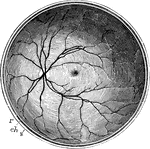
Posterior Half of the Retina
The posterior half of the retina of the left eye, viewed from before; s, the cut edge of the sclerotic…

Ovary of the Cat
View of a section of the ovary of the cat. Labels: 1, outer covering and free border of the ovary; 1',…

Limnaea Stagnalis (Linnaeus)
A thin diaphanous shell in which species of the genus Limnaea live. They can be found in the fresh waters…

Dipping Needle
"Dipping needle, a magnetic needle mounted on a horizontal support, and free to move in a vertical plane.…

Voluta Undulata (Lamarck)
"The Volutes live in the sands near the shore; sometimes they are found high and dry, left by the retreating…

Voluta Cymbium (Linnaeus)
"The Volutes live in the sands near the shore; sometimes they are found high and dry, left by the retreating…

Voluta Delessertii (Petit)
"The Volutes live in the sands near the shore; sometimes they are found high and dry, left by the retreating…
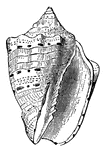
Voluta Musica (Linn.)
"The Volutes live in the sands near the shore; sometimes they are found high and dry, left by the retreating…

Voluta Imperialis (Lamarck)
"The Volutes live in the sands near the shore; sometimes they are found high and dry, left by the retreating…

Voluta Scapha (Gmel.)
"The Volutes live in the sands near the shore; sometimes they are found high and dry, left by the retreating…

Voluta Vexillum (Chem.)
"The Volutes live in the sands near the shore; sometimes they are found high and dry, left by the retreating…
!["Cuttlefish are probably the most interesting animals of [the cephalopoda] order. They live for five or six years, and lay eggs, which are large and generally found in clusters, and are known to fishermen as sea-grapes."](https://etc.usf.edu/clipart/51600/51626/51626_sepia_offici_mth.gif)
Sepia Officinalis (Linnaeus)
"Cuttlefish are probably the most interesting animals of [the cephalopoda] order. They live for five…
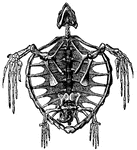
Skeleton of a Turtle
"The Tortoise will continue to live on for six months after it is deprived of its brain."

Land-Salamander
"Salamanders have the honor of appearing prominently in fabulous narratives. The Greeks believed that…

Horned Screamer (Palamedea Cornuta)
The Screamers are inhabitants of South America. They live isolated, in pairs, and are mild and peaceful…
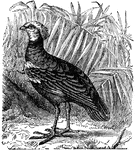
Faithful Kamichi, or Crested Screamer
The Screamers are inhabitants of South America. They live isolated, in pairs, and are mild and peaceful…

Furnarius Rufus and Oven-Bird (Synallaxis Frontalis)
"Oven-birds live singly or in pairs, in the plains of Chili, Brazil and Guiana."

The Fulvous Vulture
"When pressed by hunger it shows no fear in attacking live animals, which makes it dreaded by the shepherds…

Chrysalides of the Small Tortoise-shell Butterfly Freeing Themselves from the Caterpillar Skin
"To set itself entirely free, the chrysalis alternately lengthens and shortens itself. The old skin…

Pieris Brassicae
"They fly in the spring and summer, in gardens and meadows. They live in companies, under a silky web,…

Mucous Membrane of the Small Intestine
Free surface of the mucous membrane of the small intestine, showing villi, solitary glands, and opening…

Liparis Chrysorrhoea
"The Brown Tailed Moth is also very destructive to trees. The caterpillars live in quantities on the…
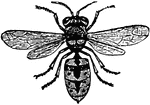
Common Wasp (Vespa Vulgaris)
"Wasps live in companies, which last only a year and are composed of males, females and workers. Their…
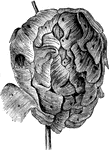
Exterior of a Wasp's Nest on a Branch of a Tree
"Toward the end of summer the nest may contain three thousand workers and many females, who live together…

Interior of a Wasp's Nest
"Toward the end of summer the nest may contain three thousand workers and many females, who live together…

Saw Fly (Sirex Gigas)
"The insects of the genus Sirex belong to a species which lay their eggs in living wood, and…

Cetonia Argentea
"These insects often feed upon matter in a state of putrefaction. They are nature's undertakers. A great…

Goliathus Derbyana
"This represents the Goliaths. These insects often feed upon matter in a state of putrefaction. They…

Goliathus Polyphemus
"This represents the Goliaths. These insects often feed upon matter in a state of putrefaction. They…

Goliathus Cacicus (Male)
"This represents the Goliaths. These insects often feed upon matter in a state of putrefaction. They…

Inca Clathrata
"They are met with in South America. The males have an extraordinary head. They fly during the day around…

Stag Beetle (Lucanus Cervus)
"They live in half rotten trees. Their strength enables them to lift considerable wieghts. They do not…

Harvest Mite
The harvest mite or chigger (Leptus autumnalis) is a mite that live in forests and grasslands.

Omophron Libatum
"They are small almost globular, of a pale yellow with green lines, an live in sand bordering rivers."

Nebria Arenaria
"They are small almost globular, of a pale yellow with green lines, an live in sand bordering rivers.…

Tenebrio Molitor (Larva and Imago)
"A blackish-brown insect. The larvae are the well-known meal-worms, which live in flour."

Scotoplana Globosa
Scotoplanes live on or just underneath the surface of the bottom of the ocean, on the abyssal plain.…
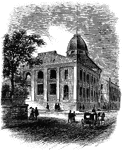
Gratiot Street Prison
The Gratiot Street Prison was an American Civil War prison located in St. Louis, Missouri and was the…

Woman Catching Live Sardines
This image depicts a woman catching live sardines in San Sebastian, Spain.
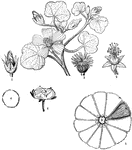
Abutilon
"Abutilon macropodum. 1. an unexpanded flower; 2. the stamens and styles; 3. a ripe fruit, consisting…
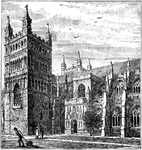
Exeter Cathedral
The founding of the cathedral at Exeter, dedicated to Saint Peter, dates from 1050, when the seat of…

John Brant
John Brant was a Mohawk chief and government official in Upper Canada, and he was the son of Joseph…

St. John's Church, Lateran Palace, Rome
The Basilica of St. John Lateran (Italian: Basilica di San Giovanni in Laterano) is the cathedral of…
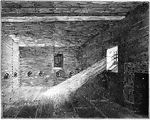
Lollard Prison, Lambeth Palace
Lambeth Palace is the official London residence of the Archbishop of Canterbury. It is located in Lambeth,…

Eton College, Near Windsor
Eton College was founded in 1440 by Henry VI as a charity school to provide free education to seventy…
Centennial Exhibition Buildings
The Centennial International Exhibition of 1876, the first official World's Fair in the United States,…

Martin Luther
Martin Luther (November 10, 1483 - February 18, 1546) was a German monk, theologian, university professor,…

Royal Palace, Madrid
The Royal Palace of Madrid is the official residence of the King of Spain, located in Madrid. King Juan…
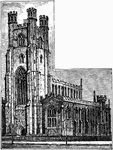
St. Mary's Church, Cambridge
In addition to being a parish church in the Diocese of Ely, it is the University Church for the University…
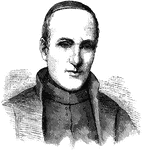
Peter Jan Beckx
Peter Jan Beckx (February 8, 1795, Sichem, Belgium - March 4, 1887, Rome, Italy) was a Belgian Jesuit,…